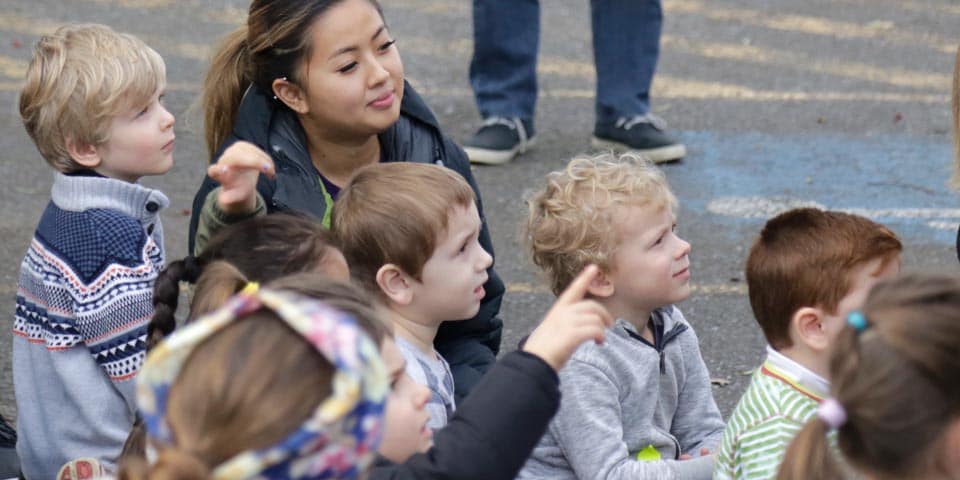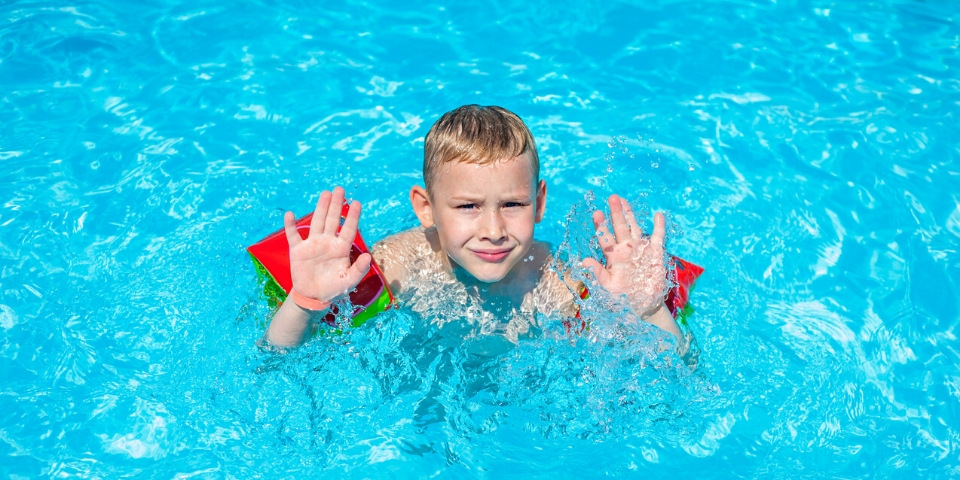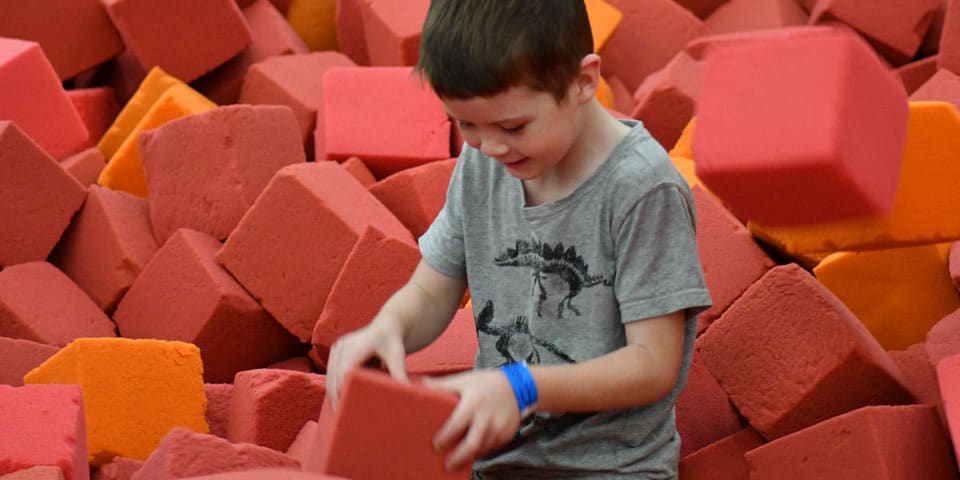Autism support in the school years
Starting school is a big milestone for all children and parents and can be even more so if your child is on the autism spectrum.
Aside from the usual mixed emotions about your child heading off to “big school”, it’s really important that you’re prepared for this major milestone in your child’s life, for what might be a demanding time.
During your child’s school years, support from professionals and from other parents can be incredibly valuable.
An overview of the range of support and services for school-aged children on the spectrum and their families is listed below.
Australian educational sectors
There are three school sectors in Australia: Government, Independent and Catholic schools.
There are around 10 thousand registered schools operating in Australia, 70 per cent of which are government funded. The majority of the costs for these schools are met by the Federal Government, but are supplemented by the states or territories.
Of the non-government schools (Independent and Catholic) around two-thirds were Catholic.
Non-government schools, both Catholic or Independent charge compulsory tuition and other fees, and can be a little or a lot more expensive than government schools.
Regardless of the school sector, all schools within Australia are regulated by the same curriculum standards framework, administered by the Australian Curriculum, Assessment and Reporting Authority.
Each sector has their own eligibility requirements and funding models to support the educational needs of children with a disability, including those on the autism spectrum.
Schooling options and obligations
There are also different schooling options within each of these educational sectors.
Some of these include;
- mainstream schooling
- mainstream schooling with support
- mainstream classes with specialist support
- combination of mainstream and specialist classes
- disability or special classes or units in a mainstream school
- autism specific classes or units in a mainstream school
- special/disability schools
- autism specific schools
- home schooling
Each educational sector has its own eligibility requirements in attending different schooling options. This can often be based on the needs of the individual, on co-occurring conditions (such as intellectual disabilities) or additional needs such as low vision/hearing, or location and availability.
Ask the school to explain the options that are available to you, and speak to your child, teachers, and the professionals your child is working with about what will be the best option for your child.
Schools have different models of funding and guidelines of how that funding can be used, which can include support staff (such as teacher aids or specialist support), equipment, or resources for professional development and training. It is beneficial to enquire about additional funding your child may be eligible to receive, and to be involved in conversations with the school about what your child’s needs are.
No matter which sector you choose, all schools should be aware of their obligations when it comes to supporting students with a disability. The same educational opportunities must be available to all students in Australia, including autistic children, and schools are required to make reasonable adjustments to student learning programs and the school environment where necessary and possible.
Choosing a school
Choosing the right school for your child is an important decision for all parents and carers but there is not one answer to which is the best schooling option for your child.
Consideration should be based on what school or schooling option will be better suited to provide your child with the developmental support they will need to thrive.
The Department for Education in South Australia identifies that successful and positive school experiences for children and young people on the autism spectrum are dependent on a number of key factors as listed below:
- The knowledge and awareness that teachers and school leaders have about autism and the impact of autism on learning and participation.
- How schools accommodate the learning needs of students on the autism spectrum from a whole school and classroom teaching and learning perspective.
- Utilising an individual’s strengths and interests across the curriculum, including social and academic learning opportunities.
- Building and sustaining positive and valued partnerships between families and school.
There is no one size fits all when it comes to schooling, but before you choose a school, you may want to consider doing the following:
- Plan ahead as soon as possible to ensure your child’s needs are met;
- Collect information about the options that are available to your child:
- Gather information about schools in your area using websites, your own network, teachers, parent support groups, or other professionals;
- Arrange to speak to the school. You may like to ask some questions such as;
- What are the values lived out in your school?
- How does the school support inclusion?
- Do you have a staff member that oversees support for students with disabilities and diverse learning needs?
- Have your staff received training or attended professional development opportunities around supporting the needs of students with Autism Spectrum Disorder?
- What accommodations and adjustments have been used in your school to support students with diverse learning needs?
- What opportunities can you provide for our child to have a place where they can go to ‘calm down’?
- What does your school provide in the way of mentoring or buddy programs?
- What is your schools behaviour policy?
- What is your schools bullying and harassment policy?
- How are parents involved in students individualised learning plans?
- How do parents communicate with teachers and staff about their child’s individualised learning plan?
Some schools will have specific criteria needed to attend alternative schooling options, but keep in mind that you know your child best, therefore the decision should not be taking lightly and should be a family decision.
Be honest in your discussions with the school about your child’s needs so they can prepare for, plan, and organise any training, assessment or support plans if needed.

Starting school
Once a school has been decided on, it is a good idea to plan well ahead of time for the transition into school.
This will allow you to follow up with questions that need answers and to prepare your child for the transition.
Parents often find it useful to work with the school to develop a Transition Plan which can include a Transition Booklet for your child.
Transition Plans can include information and planning around:
- Dates and times for planned meetings.
- Dates, times and length of transition visits.
- What staff will be supporting the transition visits.
- The routine for the transition visit.
- Plans on visiting different areas, people and activities each visit.
- Handover existing supports used in pre-schools to school.
- Provide copies of supports and strategies used in the home to school.
- Information on how home-school communication systems will operate.
- Information on mentors or buddy system.
- Identifying a place and person where your child can go to feel if they’re feeling overwhelmed.
- Information on the rules and routines of the school.
A Transition Booklet may be developed for your child to support the transition. This may include:
- Information on the school rules including the school boundaries.
- Photographs or pictures of the environment including classrooms, play areas, specialist lessons, libraries, canteens and the office area.
- Photographs or pictures of some of the class routines like up packing your school bag, where to line up, outlines in the classroom such as where to put items such as bags and drink bottles and where to line up and where to sit.
- Photos of classes and key areas such as the library, canteen and playground areas.
Some parents support their child to develop a booklet or a letter for their new teacher or school to introduce themselves. This can include:
- Their name and age
- Who they live with
- Pets that they have
- What they like
- What they don’t like
- What their strengths are
- What things they find challenging
- What strategies work for them
- How teachers and staff can support them if they get upset
This information can be valuable to support the needs of your child and to build a positive relationship between student and teacher.

Support at school
While school can be a great opportunity for development, autistic children and young people are four times more likely to require additional learning and support services than their peers.
Each educational sector, Government, Catholic or Independent, uses a different educational model, and often have their own process around providing supports and services to students with additional needs.
In most schools, teachers and staff are often assisted by an educator with specialist training in supporting students with additional needs in the classroom.
Schools are then often supported by specialists in their sector via face-to-face meetings or over the phone consultations.
Each state and territory school sector whether Government, Catholic or Independent offers different types of support for students with additional needs. Support available to your child is dependent on a number of factors, including:
- their area of need,
- the impact of their disability in the educational environment,
- age, and
- educational sector.
Your school may receive or access funding for your child to receive support from a professional, to access group interventions, or to get specialised equipment to support your child’s needs. Schools may also receive or access funding to find therapists or other professionals to work with your child at school.
You might need to spend time working with your child’s school to get the best educational outcomes for your child – speaking to your child’s teacher, lead teacher, principal or deputy principal is usually the first step to finding out if your child may be eligible for extra support.
Many children with a disability, including autism, are eligible for a form of individual educational or learning plan. These include information about the student’s strengths and challenges, as well as the strategies and adjustments needed in the school environment to help your child reach their goals.
Individual educational or learning plans will often include adjustments to the learning environment , as well as assessment and reporting.
These plans may also list other needs or technologies that will allow your child to learn, e.g. an alternative seating arrangement; or augmentative and alternative communication (AAC) aids.
The school should also consider the students learning environment, assessment and reporting, planning, curriculum and teaching and learning, to support student needs.
Many schools have support staff that can assist you and your child to establish what these needs are, so make sure you ask them about their internal support staff and classroom options.
Quick tips for parents and carers of school students:
- Keep communication with the school open and honest.
- Help work with the school to maximise the partnership.
- Ask lots of questions.
If you have ongoing concerns, or if you need help, you can contact your local autism advocacy association for assistance, or ask your GP to refer you and your child to an Autism Consultant, Occupational Therapist or Developmental Educator who can work with you and your child’s school on a structured plan.

Finishing school
As your child finishes school, they may be considering further education.
School Leavers Employment Support (SLES) is an early intervention approach for Year 12 school leavers. It’s designed to support your transition from school to employment.
There are a range of programs, often run by autism or disability service providers that can help young people prepare for, look for, and gain, employment. They work with you to provide meaningful, individualised capacity building activities so you can achieve your employment goals.
To find out more about the higher educational pathways in Australia, visit the Autistics’ Guide to Adulthood and complete the Education Module.
Services
There are a range of services and funding sources available to support your child during their time at school – including the development of assessments and plans, speech pathology, occupational therapy, consultancy and individual support.
Some supports and services for your child may be funded through the NDIS, your state or territory government, or your school sector.
Group activities
Many state and territory autism associations facilitate group activities and courses for autistic children and young adults.
Generally, these groups focus on building your child’s emotional and social skills, and can cover topics like developing conversation and friendship making skills, how to manage anxiety, teaching daily living skills (e.g., meal planning and cooking), handwriting, or interest groups.
A multidisciplinary team – including teachers and teacher aides, speech pathologists, occupational therapists, psychologists and other supporting professionals, such as developmental educators – usually run these groups. These groups take place in the school, community or clinic setting.
Contact your local state or territory autism association to find a group in your area.
In South Australia, Autism SA run a range of groups for autistic children and adults. Visit Autism SA for more information.
The Autistics’ Guide to Adulthood is a free resource which includes a module on Entertainment, Recreation and Leisure and can be a valuable resource to develop skills for autistic adults around how to join various groups in their local community, or online.
Parent groups
As the parent of an autistic child, you might want to consider joining a support group at some point. Support groups can be an excellent way to share experiences and make friends, and to discuss the successes and stresses of day-to-day life.
Your state autism association will be able to provide you with information about support groups in your area, or you could join a national support program such as MyTime, which provides support for parents, grandparents and carers of children with a disability or chronic illness (not specific to autism).
You might also like to consider joining the parent group at your child’s school, so you can get to know other parents in your area and involve yourself in the school community.
There are also a vast number of web-based support groups available for parents and carers of autistic children. A list of Facebook groups can be found on the Parent Connect website.
For more information about support for carers visit our resources page.
Advocacy
Sometimes it can be challenging finding a school, or working with a school, to ensure your child’s individual needs are best met.
If this is the case, you might like to turn to educational advocacy for extra support and counsel. Advocating for your school-aged autistic child involves working with people, organisations and service providers to support your child’s needs.
For example, you might have an advocate to assist you in getting support for your child in school, or assistance when attending planning meetings with government organisation to ensure your child receives funding to support their needs.
If you need support getting started, an advocacy service may be useful. Autism Aspergers Advocacy Australia is a national organisation directly representing autistic people and their families. The organisation regularly develops and promotes national policy, and reports on outcomes.
This article, ‘What are your rights if your child with a disability is denied a school place?’, published by The Conversation, is a useful resource for anyone who is advocating for their child at school.
There are also state-based family advocacy groups – many of which are delivered by Legal Aid – to support families to promote and defend the rights and interests of autistic or other developmental disabilities.
Recreation
Recreation and extra-curricular activities are important for autistic children, as they provide your child with opportunities to practice social skills, physical aptitude and boost motivation, often leading to increased self-confidence.
There are a range of recreational activities that school-aged children on the autism spectrum can get involved with – some may be for all children in the community, while some may be autism or disability-specific.
Choosing a recreation activity for your child will depend on their interests, your financial situation, transport, individual needs, and availability of groups in your area.
Nearly all schools offer a program of sporting, artistic and civic extra-curricular activities.
To find out about recreation activities in your area that are available to all children, an internet search will provide a few ideas. You may also be able to find some activities by asking other families in your area, talking to people at your child’s school, or by contacting your local council.
Your state or territory autism association will be able to provide you with information about what autism-specific activities are close to you.

Learning to swim
Living in Australia, learning to swim is an important part of childhood, but for some autistic children, learning to swim might present some challenges. Some autistic children may be able to participate in regular community or school swimming lessons, while others may require a modified program.
Most states and territories offer modified programs for autistic children and other disabilities. For regular swimming programs contact your school, council or local swimming pool.
What is aquatic therapy?
Aquatic therapy can support children who are just starting to learn about water – getting used to the sensation, wanting to learn about being safe in the water, or for kids who absolutely love the water. It can be used to facilitate regulation and engagement in a way that land-based therapy doesn’t, supporting children to work towards their OT goals and have fun doing it!
Goals and skills worked on include, but aren’t limited to:
- Gross motor skills
- Fine motor skills
- Social skills
- Community participation
- Water safety
- Sensory and emotional regulation
- Following instructions, and
- Transitioning skills.
Autism SA offers aqua therapy out of Adelaide, South Australia. Contact Autism SA for more information.
For other modified swimming lessons for children on the autism spectrum and other disabilities contact your disability department or autism association to find out what is available in your area, or visit our Resources page.

Health
Starting school, transitioning to high school, changes in routine and coping with day-to-day school life may have an impact on an autistic child’s health, in particular, their mental health.
Autistic children and teenagers may have more anxiety than other children, which can impact their enjoyment and learning at school – or even make them stop wanting, or being able, to go to school.
Anxiety at school
Before your child starts primary school, getting them familiar with the school and its rules and routines is a great strategy to help alleviate anxiety. You might like to:
- Look at the schools website;
- Practice the journey to school;
- Meet some staff and teachers at the school;
- Use a calendar to count down days;
- Create a Transition Booklet using photos and pictures about their new school;
- Make sure they know a safe place to go if they are feeling overwhelmed.
Visual strategies can also help your child with separation – consider showing your child a photo of them at school, and a photo of you at home or work, and a photo of you coming to pick them up once school is complete.
When helping your autistic child navigate school, good communication is key – particularly if they are experiencing anxiety.
One of the most practical and helpful things you can do as a parent or carer is to develop a one-page document containing written suggestions to help staff understand your child diagnosis. This could include information about their:
- Interests;
- Strengths;
- Things they struggle with;
- Triggers for anxiety;
- Strategies that work for them; and
- How staff and teachers can support them.
This document should be reviewed and updated regularly.
It is also valuable to work with the school to establish strategies that can support anxiety at school. Some strategies may l include:
- Creating a Transition Booklet when they transition to a new class/school.
- Setting up a place that your child can go if they are anxious such as a ‘break place’, ‘Quiet Zone’ or ‘Sensory Room’ or a break routine such as a place they can walk to/around, or a drink fountain.
- Creating a ‘calming box’ or a ‘pleasure booklet’ that the person can look at or use which will make them calm again. This can include photos of pets and places that make them calm.
- Setting up a clear way they can access this place or routine when needed such as ‘break cards’, a sign etc.
- Creating Access Cards that the person can give to temporary teacher or support staff that gives then key information about them and how anxiety can impact them in the classroom.
- Working on identifying the feeling of being anxious, and identifying strategies that can be used to reduce this feeling over time.
You might find it useful to have a key contact person at the school – like a classroom teacher, the counsellor, or possibly the school psychologist – that you can contact regularly if needs be in person, by phone or by email.
Communicating regularly with this person means everyone knows how your child is feeling. You can also ask your key contact person for advice around strategies they use to manage anxiety, and apply them at home.
Your child should also have a contact at the school that they feel comfortable talking to if they need help – a counsellor, student wellbeing coordinator, or school psychologist is a good place to start.
Autism and eating disorders
Some research indicates that girls with anorexia have an above average number of autistic characteristics.
While autism is more often diagnosed in males, research suggests that a proportion of young autistic females may be being overlooked or misdiagnosed because they present with anorexia.
If you think your autistic child or teenager may be experiencing an eating disorder, contact your GP.

Emotions
Classrooms are social environments that require students to interact, socialise and communicate with others.
The challenges that your autistic child or teenager may experience when it comes to interacting socially and communicating at school can often lead to increased levels of stress and anxiety.
Difficulties with others understanding your child’s emotions, and them understanding others perspective can challenge a student’s connection with peers and their academic performance.
If you’re concerned that your child or teenager needs additional emotional support at school, the best place to start is to speak to your child and the school’s student wellbeing coordinator, counsellor or psychologist.
Bullying
School bullying can have an impact on the lives of students diagnosed on the autism spectrum.
There is a relationship between bullying and unhappiness at school, which may cause feelings of unsafety at school, low self-esteem and poor coping skills.
To combat bullying, families, schools and communities, should enforce a zero-tolerance policy towards bullying, while promoting an inclusive and accepting environment.
If you think your child is being bullied, or if your child has told you they are being bullied, the best person to speak to is your child’s classroom teacher, lead teacher or school principals.
Tips for dealing with bullies:
- Speak with your child
Ask your child what is happening, listen carefully to their response and ask them how it makes them feel. Try not to get angry or upset, as your reaction may prevent them from speaking to you if the bullying continues. If your child finds it hard to talk, try asking them to write down what’s happening and how they feel about it. Make sure you respond positively to them and make sure they know that you believe their story or experience and that it’s not their fault. Also remind them that they’re not alone and have support. - Keep a diary
Record all incidents, including, who was involved, what was said or done, and any action teachers or the school may have taken.
- Talk to the school
Make an appointment to speak with your child’s teacher or the principal about what is happening, ask for a copy of the school’s anti-bullying policy and ask them how they would advise proceeding. Listen to their answers and write them down for your own records. Also, discuss ideas or actions that you feel may help. Be proactive in acknowledging your child’s needs. Following the meeting send the teacher or principal an email to list all of the actions that were discussed, so that there is a record of the meeting.
- Develop self-advocacy skills & support their awareness of social situations
Talk to your child about their differences and make them aware that everyone has differences. Assist your child to know how to respond to the bully before seeking support from a trusted adult (if they are unable to deal with the situation on their own). Some find that writing a social narrative is helpful for students dealing with bullying, as it will give them responses that they can use in that situation and help them to seek help from the right people. It may be useful to work with a therapist as they may be able to provide support in these situations by teaching new skills. - Create a community of care
Ask the teacher or principal to help identify a group of children who might be able to buddy with your child in the playground to help them widen their friendship group and provide a caring and supportive environment outside of the classroom. These friends or buddies could also teach other children in the school about autism to help raise awareness and understanding of difference.
- Autism awareness among parents
Become an advocate for your child by raising awareness of autism among parents, including the differences and abilities associated with it. This may help to change the dialogue among parents at home, which will ultimately have an impact on how their children perceive difference.
Puberty and relationships
Social and romantic relationships can be difficult for anyone to navigate, but can be more difficult for young autistic people and teenagers.
Puberty can be distressing for some adolescents, but when you are autistic as well, these changes can be difficult to deal with. Hormonal changes can also affect mood and might impact mental health. As such, teenagers on the spectrum may require additional support to understand themselves and their autistic identity in the context of growing up, reaching puberty and entering into romantic relationships.
The Autistics’ Guide to Adulthood is a free online resource which provides a self paced learning module on Romantic relationships which can support adults to understand and navigate the complexities of these connections.
Relationships Australia is a provider of relationship support services for individuals, families and communities and can assist in supporting all people to achieve positive and respectful relationships. They provide counselling, group programs, courses, mental health support, and relationship building programs that are specific to autism.
Short term accommodation or care
Caring for an autistic child or teenager can sometimes be emotionally and physically demanding. To ensure you are able to support you child, it can sometimes be a good idea to take a break. You might like to consider short term care options.
This can include asking family or friends to care for your autistic child or teenager, or your other children, for a short period while you do an activity like go to the movies, go for a walk, or it may be overnight so you can have a short get away.
Alternatively, you may be able to access paid support, or short term accommodation, where someone looks after your child or teenager, to give you and your child some time to rest, relax and recuperate. Whether the care is a few hours or a few weeks, sometimes it can support your emotional and physical wellbeing, as well as your families.
Short term accommodation and care can be accessed occasionally, or on a more regular basis, and can occur either in your own home or somewhere else.
Autism SA offers a range of accommodation options in Adelaide, South Australia. Visit Autism SA to find out more.
The siblings of children and young people with autism also need time out every now and then. Siblings Australia is a great organisation that helps to improve the support and respite services available to siblings of children and adults with chronic conditions including disability, chronic illness and mental health issues. They also provide support for parents and carers including workshops, online webinars and newsletters.
For more information about Short term accommodation, visit Autism support and services in the community.




